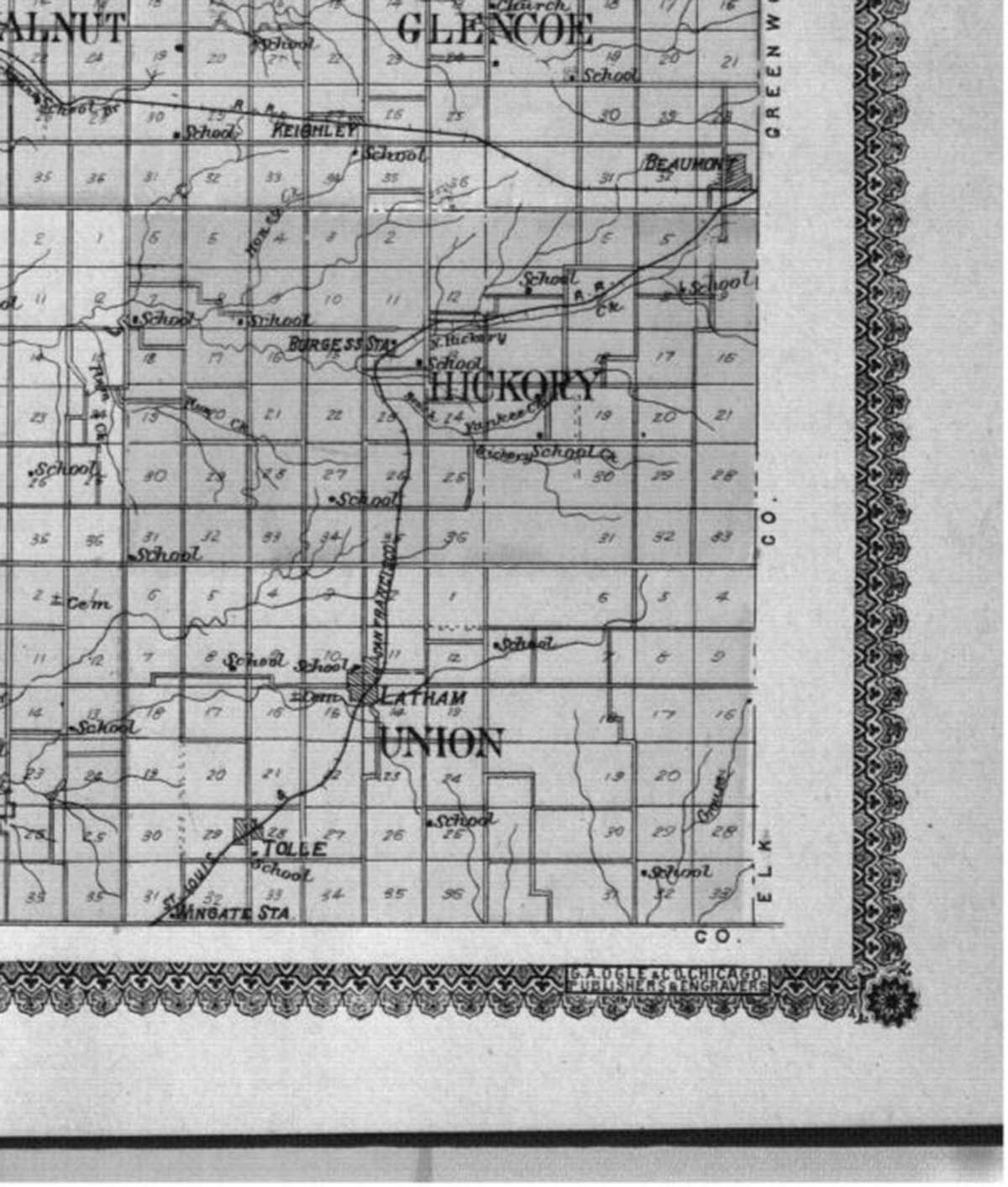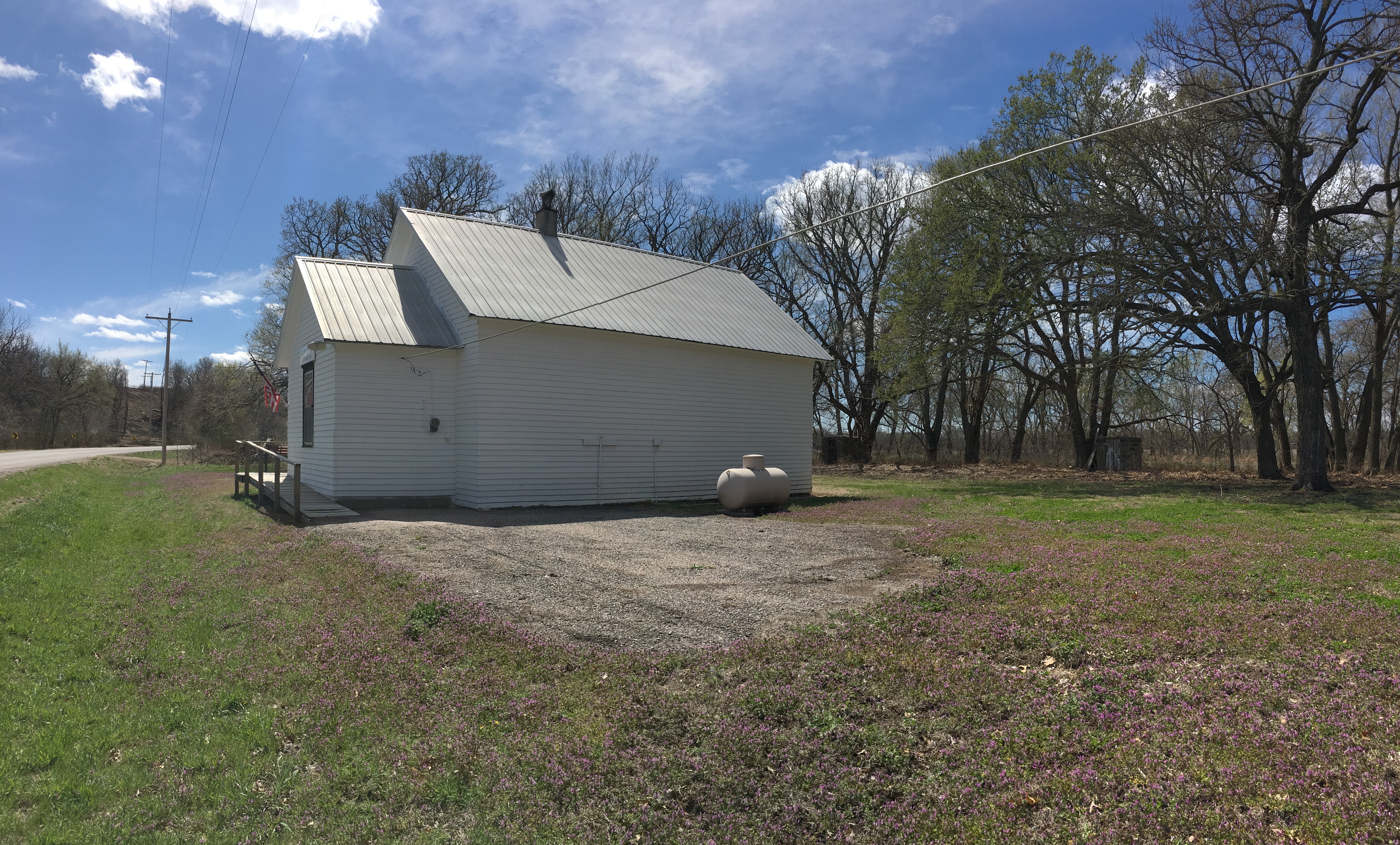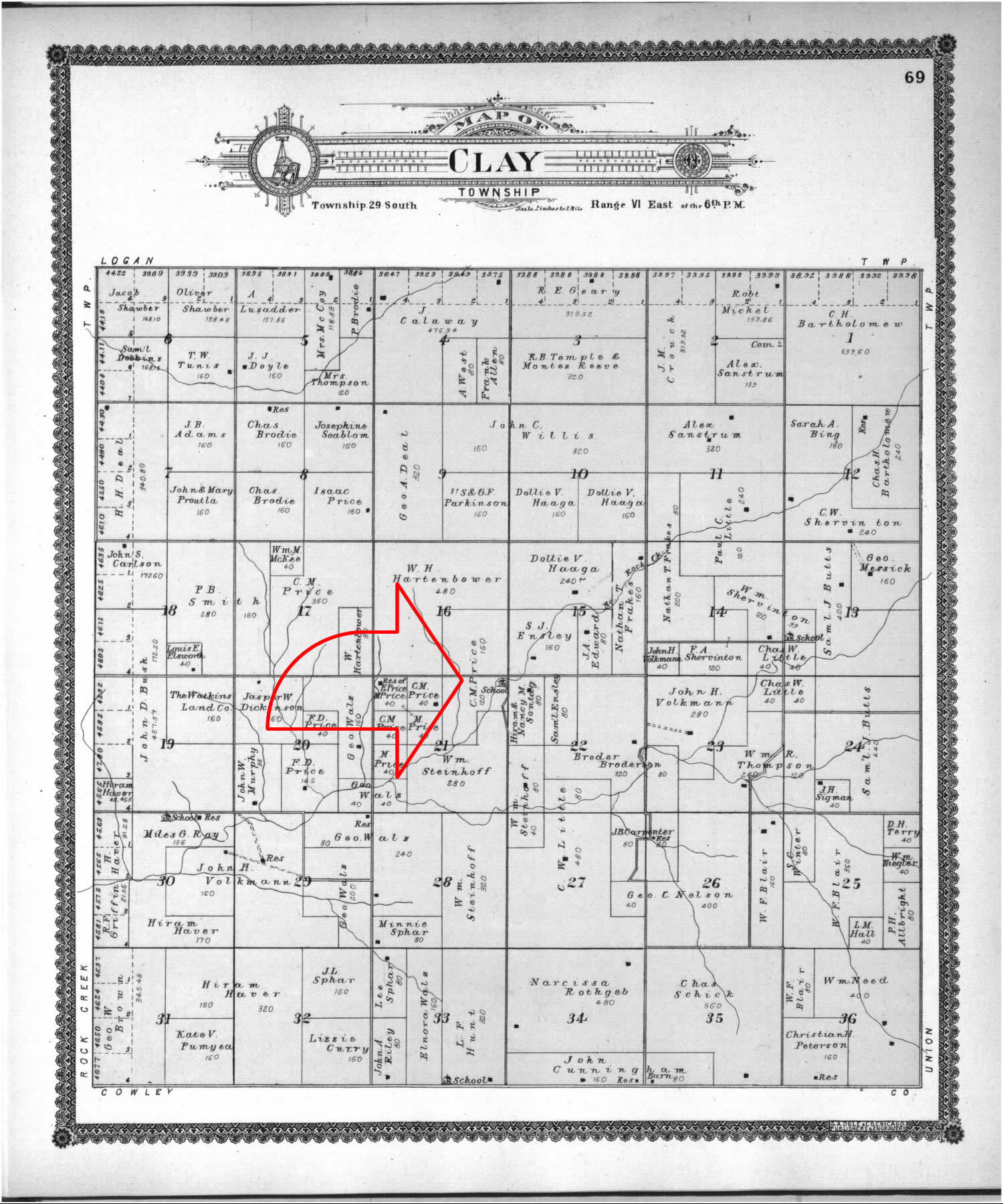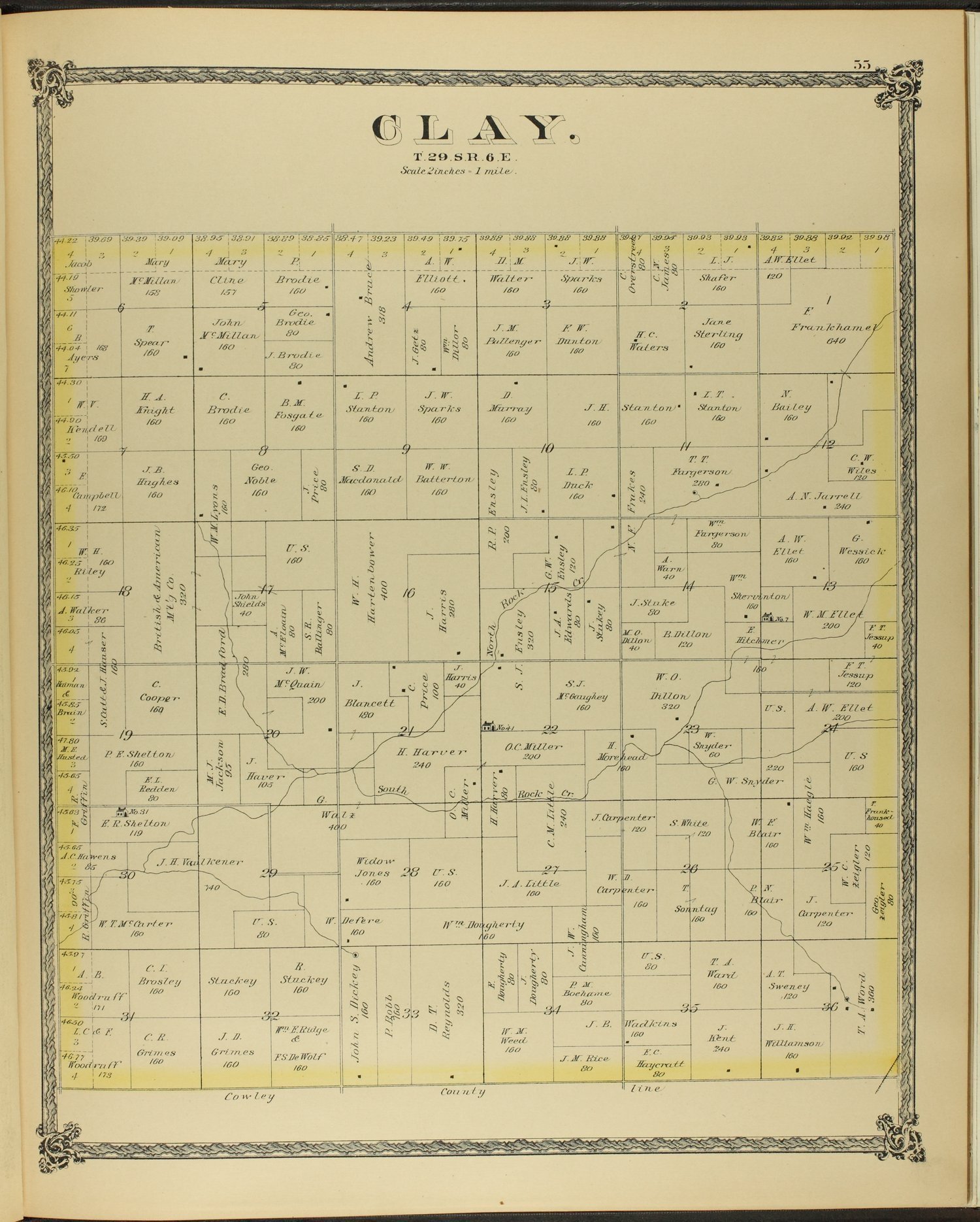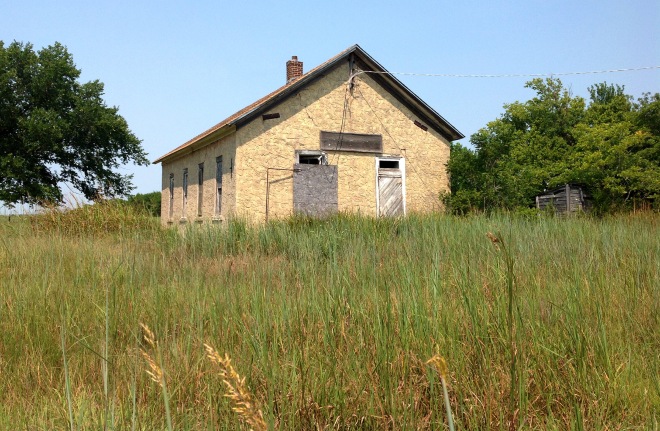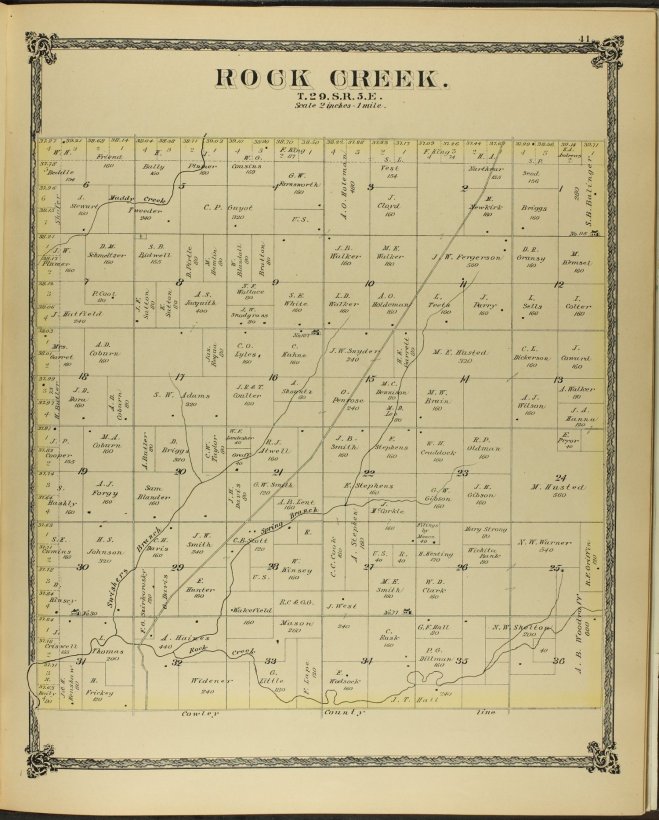Latham, Kansas, in Union Township.
It was once a thriving town serving farmers and ranchers in Rock Creek Valley, a stop on the short route of the Winfield Southwestern Railroad (later, the St. Louis and San Francisco Railroad) that connected Beaumont to Winfield.
Today, the railroad tracks are gone but the town lingers on. The Latham Saloon provides weekend entertainment. On Sundays, one has a choice of two churches, Baptist and Methodist. Otherwise, it is a Rip-Van-Winkle kind of town.
Latham lies just north of Rock Creek in Union Township. Get there by heading east of Wichita and Augusta on US 400, before Beaumont go south on Stony Creek Road. Or head north from Cambridge in Cowley County.

Ellet School
The Ellet School No. 42 was once located at the now defunct town of Bodark along with the post office. In 1885, the one room school and post office moved two miles east to newly built the railroad and Latham. The school is named for Civil War General General Alfred Ellet, or his son who settled on Rock Creek, in nearby Cowley County. (Walnut Valley Times, June 24, 1870.) The school is on Cherry Street just south of 200 Street. It is a typical white clapboard construction with three windows to each side and a single door in front. The school was begun in 1871, given the number 42 in Butler County, making it one of the earlier schools.
[Note. The present school is dated 1880 and numbered 7. It may be that this school is not the Bodark school but one from Clay Township. Kansas Trails, source.]
Latham 1885
What kind of town did Latham become? The first issue of the weekly Latham Journal in September 1885 extolled the beauty of the town nestled on a hillside alongside Cherry Creek Valley. The headline was a new grocery store for Latham to compete for business with C. H. Backus. Latham already had a hardware store, general store, and pharmacy all advertised for business. One could eat at the Star Restaurant two blocks west of the depot on Main Street and even find overnight accommodations.
Latham’s farmers and cattle ranchers fared will enough to build a high school. A faculty of three taught Latin and German, Science and Mathematics in addition to all the necessary skills. Here is a link to the Latham High School Yearbook of 1913.










